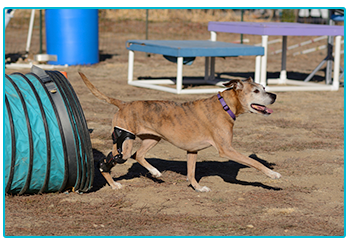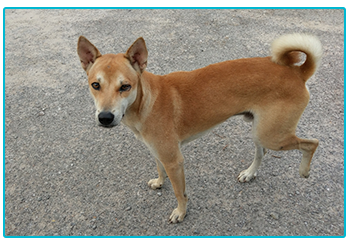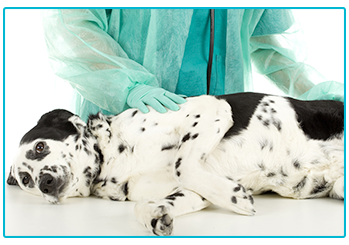We all want the best for our canine friends, which is why it can help to be aware of some of the things that could go wrong. One such health problem is cranial cruciate ligament disease. It is one of the most common causes of hindlimb lameness problems in dogs. At The Insurance Emporium, we care about the wellness of your dog. That’s why our pet health expert has given us this advice on the condition.

What is cruciate ligament disease?
This disease occurs in the dog’s stifle joint, which is like a human knee joint. It has two strong fibrous ligaments extending from the femur to the tibia – two of the dog’s leg bones – which cross over within the joint. These are the cruciate ligaments and they stabilise the joint in a forward-backward motion. Sports players might be familiar with this injury, as they can rupture their anterior cruciate ligaments during a traumatic event.

What causes it?
For dogs, the underlying cause of cruciate problems is very different to that in humans – even though dogs are athletic! In dogs, cruciate ligament problems are considered to be a ‘disease’ process because of the gradual deterioration and thinning of the ligament over time. This deterioration can eventually lead to partial or complete rupture of the ligament, which can occur in normal daily exercise.
It is thought that genetics play a part, as the affliction is particularly common in large breeds, such as Rottweilers, Labradors and Boxers. It is also common in obese dogs.
How it affects your dog
The disease causes lameness in dogs. How severely this affects your dog depends on how badly their ligament has ruptured. Sometimes their lameness can come on straight away. In other cases, its onset can be insidious and your dog’s lameness may be progressive and intermittent. Statistically, 40% to 60% of dogs with cruciate ligament disease develop a similar problem in the opposite knee.

Can you avoid giving your dog surgery?
If your vet diagnoses your dog with cruciate ligament disease, they will discuss different treatment options. Dogs weighing more than 15kg rarely recover without surgery, although non-surgical treatment might be recommended for older, small breed dogs. Non-surgical treatment could include medical treatment, weight management, hydrotherapy and physiotherapy.
What surgery might your dog need?
In terms of surgical procedures, options include prosthetic ligament replacement techniques as well as more advanced procedures, including Tibial Plateau Levelling Osteotomy (TPLO) and Tibial Tuberosity Advancement (TTA). TPLO and TTA change the geometry of the stifle joint so that the cruciate ligament is no longer needed. Around 90% of dogs return to normal activity after TTA or TPLO procedures. Dogs generally need between two to four months rehabilitation after surgery.
If your dog has cruciate ligament disease, it is well worth taking them to the vet as soon as you can. Your vet will discuss the options they believe are best suited to your dog. The sooner you can get your dog treated and back on its feet, the sooner it can get back out to enjoy its magical adventures!
All content provided on this blog is for informational purposes only. We make no representations as to the accuracy or completeness of any information on this site or found by following any link on this site. We will not be liable for any errors or omissions in this information nor for the availability of this information. We will not be liable for any loss, injury or damage arising from the display or use of this information. This policy is subject to change at any time.


